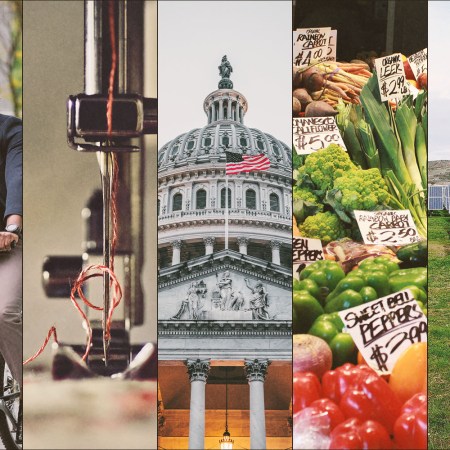When we talk about emissions from gas-powered cars and fossil fuel-burning power plants, the modern conversation turns to climate change, and rightfully so. But there’s a growing global problem undergirding this catastrophe: air pollution. According to a new study published Monday in Lancet Planetary Health, only 0.001% of people on earth breathe air that is considered safe by standards set by the World Health Organization.
The peer-reviewed paper is focused on measuring concentrations of fine particulate matter, known as PM 2.5, “tiny particles in the air that scientists have linked to lung cancer and heart disease” which are “made up of soot from vehicles, smoke and ash from wildfires and biomass cook-stove pollution, plus sulfate aerosols from power generation and desert dust,” among other sources, per Bloomberg. The study captured daily and annual data around the globe between 2000 and 2019, and found that on average, 70% of days a year in 2019 had PM 2.5 concentrations above the limit the WHO deems safe.
So where are people the safest? According to annual exposure, the authors of the study found that Australia and New Zealand were exposed to the lowest levels of PM 2.5, with other countries in Oceania and those in southern America coming in behind (though none of these countries as a whole were deemed completely safe). The areas most at-risk are eastern and southern Asia, with northern Africa coming in third. But it’s also important to look at where we’re trending: During the timeline of the study, southern Asia, Australia, New Zealand, Latin America and the Caribbean saw increases in exposure, while Europe and northern America saw decreases.
Billionaires Send a Clear Message: Individual Climate Action Is Bogus
If self-professed climate leaders like Elon Musk and Bill Gates can’t cut down on private jets, how can we expect regular Americans to take climate change seriously?The good news, if there is any to be found in this study, is that the WHO has adopted fairly strict rules for what it considers a safe amount of air pollution.
“In 2021, WHO cut the acceptable limits of PM 2.5 by half to help drive better efforts to lower air pollution and protect populations,” The Washington Post reported. But the paper also added: “[E]ven using WHO’s previous threshold (10 micrograms per cubic meter), [lead author Yuming] Guo and his colleagues found still only 1.8 percent of the global population in 2019 was exposed to an amount below recommended levels.”
While it may be tempting to consider a move to New Zealand, a trend billionaires have already been embracing as the planet faces compounding crises, there does seem to be a solution staring us in the face. The decreases in air pollution in Europe and North America documented in this study appear to be tied to tougher legislation aimed at combating air pollution — and by continuing to get tough on fine particulate matter, we’ll also be combatting emissions related to climate change. Now that’s a win-win.
Whether you’re looking to get into shape, or just get out of a funk, The Charge has got you covered. Sign up for our new wellness newsletter today.


















